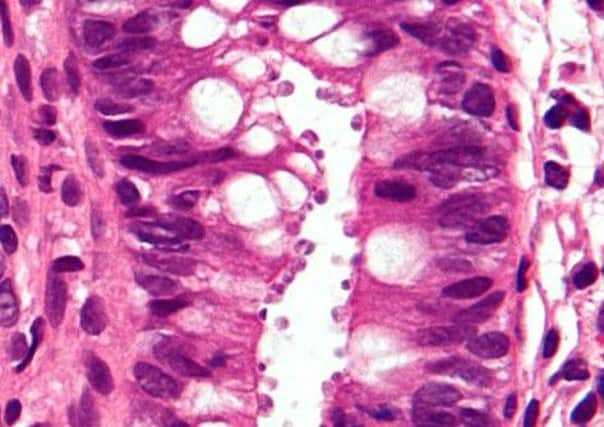WATER SCARE: What is Cryptosporidium?


Cryptosporidium affects the epithelial cells of the human gastrointestinal tract and other tissue such as the respiratory tract. It can also parasitse over 45 species of vertebrate including birds, fish, reptiles and mammals.
Infection with Cryptosporidium represents a wide range of severity from asymptomatic infections to life-threatening diarrhea. Asymptomatic infections are a likely source of infection for other people.
Advertisement
Hide AdAdvertisement
Hide AdThe diarrhea is profuse and watery and is associated with abdominal cramps. In immunologically healthy people symptoms may come and go and is typically cleared in less than a month.
In people who cannot clear the parasite (HIV), the infection can be prolonged and can lead to death.
Infection with Cryptosporidium is typically transmitted by the fecal-oral route; fecally contaminated water or food and person-to-person contact.
The parasitic stage that is infectious is called the oocyst. This stage of the parasite is immediately infectious to others. The amount of oocysts that is required to cause is infection is quite low (10-30 oocysts) and can survive in chlorine treated water.
Advertisement
Hide AdAdvertisement
Hide AdPeople at most risk for infection are young children, animal handlers, travelers, and close contacts of infected people like family members and day care workers.
There have been several outbreaks of Cryptosporidiosis seen worldwide with most being associated with recreational water, day care centers and drinking water contamination. The most notorious is the outbreak in Milwaukee in 1993 where 400,000 people got infected through the water plants filtration system.
Though cryptosporidiosis in immunocompetent people is typically self-limiting, a large, rapid loss of fluid is treated with fluid replacement and Nitazoxanide. In HIV infected individuals, nitazoxanide or a combination of several drugs may be required to decrease the diarrhea.
Laboratory diagnosis of cryptosporidiosis can be through finding the oocysts microscopically in the patients stool, by the use of enzyme immunoassay procedure or PCR.
What can be done to prevent infection with Cryptosporidium?
Advertisement
Hide AdAdvertisement
Hide Ad• Good hygienic practices like handwashing and not swimming when sick with diarrhea;
• Appropriate treatment or avoidance of contaminated water. Filtering or boiling water, avoid swallowing water while swimming;
• Taking precautions while travelling.
For more on the water contamination in Lancashire visit the links below: